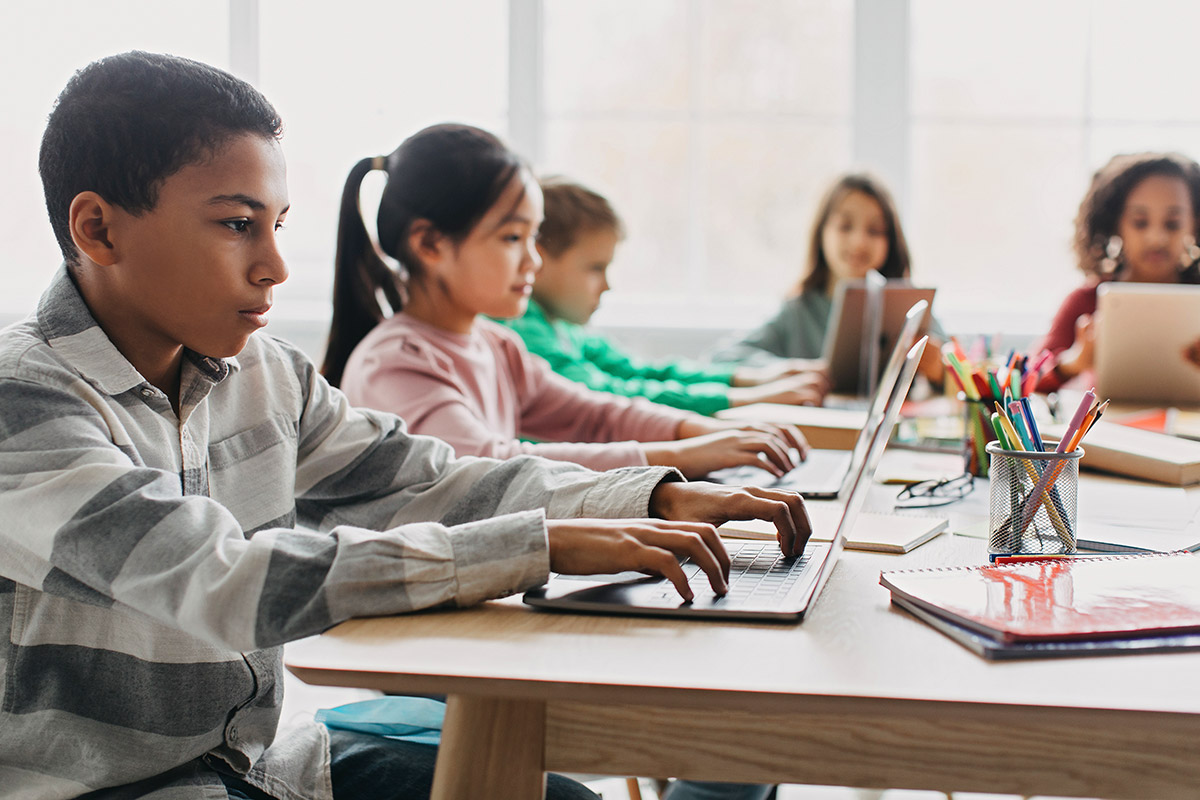
Shining a New Light on the Spread of Coronavirus in the Classroom with UVC Disinfectant Solutions.
As cases spike in LA County and Southern California, do current coronavirus measures cause major disruption for students, teachers, and lesson plans, what are the proactive alternatives school districts should take to prepare for the next outbreak?
Southern California’s COVID Tipping Point
Since late October, LA County’s coronavirus case rate has tripled with a reported 2,710 cases a day. Just as a comparison, a case rate of 100 a day is considered high. If you’re an educator, this uptick is bound to set off alarms, and when combined with the rise in respiratory illnesses and flu cases, leading to a winter “tripledemic”, it’s a stark reminder COVID is still with us, and still causing endless disruption for both educators and students.
For school districts in LA County and Southern California tasked with keeping their students safe and healthy this winter, it’s a challenging time as they consider re-implementing mask mandates, social distancing, remote learning, and in some cases, school closures.
Falling Short on the Long-Term Solution
While these multifaceted COVID-19 strategies can be effective in the short-term, the long-term effects of this disruption to student’s education and well-being has been well documented. In addition to the realities of imposing masking orders and social distancing rules in schools, an Education Week survey found as many as 60% of children and adolescents suffered symptoms of anxiety and depression resulting from social distancing and school closures.
Multi-Layered Defense Begins in the Classroom
When an outbreak occurs, educators have a whole arsenal of measures at their disposal. The CDC guidelines, including frequent hand washing, using chemical sanitizer in classrooms, repeated testing, and, of course, vaccinations, are the first layer of defense for preventing infection. While mandatory masking, social distancing, remote learning, and school closures are all on the table when outbreaks happen, they cause major disruption for students, teachers, and parents alike. There is a better, more proactive way that could avoid this level of disruption, and that begins with boosting the indoor air quality (IAQ) in classrooms.
Nationally, school districts are scrambling to update ventilation systems, and planning to spend $4.4 billion on HVAC updates to reduce the threat of airborne pathogens like COVID-19. These upgrades can be expensive and time consuming to install. While great for cooling, heating and air-filtration, traditional HVAC systems can’t do the one thing that would make classrooms safer for students and teachers: lessen the viral load of COVID-19 pathogens in the air. For that, schools should be proactive in mitigating these airborne microorganisms. Innovative technologies, such as UVC, which are easy-to-install and don’t disrupt daily activities, are a no-brainer solution.
Disinfection Without the Disruption: the Future of Viral Reduction is UVC.
Keeping things “normal” during a spike in the coronavirus is no easy task, and new acts concerning air quality means school districts must meet more stringent air quality standards by 2024. And let’s not forget research showed that the Coronavirus tends to cling to stale air, in addition to the bigger droplets that masks are supposed to protect against.
What immediate steps can school districts take to improve air quality on campus?
UVC disinfection is a hospital-grade technology that works by using UVC waves to penetrate the cell walls of an organism to prevent the replication of their genetic material–ultimately stopping the spread of viruses, bacteria, mold, and mildew in their tracks. A proactive approach using Upper Room UVC solutions are extremely effective at inactivating airborne viruses and killing bacteria, providing a perfect complement to HVAC ventilation in high-traffic areas such as classrooms and school cafeterias.
R-Zero’s ecosystem is an ideal solution for schools to prioritize indoor environmental quality for students and staff. Already used by thousands of schools across the country, UVC disinfection tools are becoming the standard in enhancing classroom air quality. Not only effective, the R-Zero platform can also be up and running in a matter of days—significantly faster than installing a new filter and magnitudes faster and more cost-effective than revamping an entire HVAC system.
For more information on how IAQ affects educational facilities, visit https://rzero.com/education/
UV environmental disinfecting is supplemental to, not a replacement for, physical surface cleaning and is effective only on exposed surfaces and in circulating air exposed to UV light. R-Zero’s products are not medical devices and are not intended to diagnose, treat, cure, mitigate, or prevent disease, nor have they been evaluated or cleared by the FDA.
More posts you might like
-
Trends Driving Corporate Climate Strategies in 2024
Research firm Verdantix recently published a study surveying 353 global decision-makers, across 38 countries, on the key trends shaping their corporate climate change strategies in 2024. Currently, net zero targets cover a majority (92%) of global GDP. According to the study, prioritizing compliance, seeking competitive advantage, and aligning with stakeholder requirements are the top three […]
-
Celebrating Earth Day, Today and Everyday
We are proud to celebrate Earth Day, today and everyday, in our mission of preparing today’s buildings to meet tomorrow’s challenges. Historically, achieving a balance between building user comfort and experience resulted in increased energy consumption and cost, presenting a significant trade-off for building owners and operators aiming for efficiency and sustainability. R-Zero solutions remove […]
-
Creating Energy-Efficient Outcomes for Your Buildings
Q&A with R-Zero’s Matt Arneson In honor of Earth Month, we sat down with our in-house expert in energy efficiency, Matt Arneson, to learn more about how customers can drive sustainable outcomes across their buildings. Climate disclosure regulations, both domestic and international, seem to be in the news every week. Are building developers, owners, and […]


